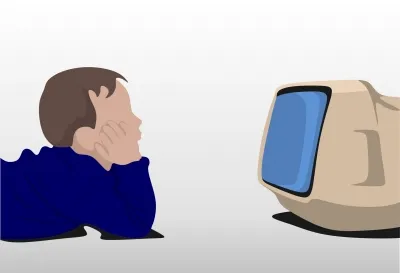Surge in Screen Time Linked to Rise in Near-Sightedness Among Children and Adults: Experts

Synopsis
Key Takeaways
- Excessive screen time increases the risk of myopia.
- Digital eye strain affects children significantly post-Covid.
- Reduced blinking leads to dry eyes and ocular discomfort.
- Healthy eye function is linked to overall bodily health.
- Outdoor activities are essential for maintaining long-distance vision.
New Delhi, March 24 (NationPress) The excessive use of digital gadgets and the consequent surge in screen time is steering a considerable number of individuals, particularly the youth, towards near-sightedness or myopia, as cautioned by specialists on Monday.
Health professionals have persistently expressed worries about the world heading towards a severe myopic crisis, notably after the Covid-19 pandemic, when conventional schooling transitioned to online platforms via tablets and laptops, and outdoor activities dwindled.
“Digital eye strain is emerging as a major issue, especially among children in the aftermath of Covid. When kids concentrate on screens for extended durations, their eye muscles remain contracted. Over time, this extended strain fosters the development of myopia (near-sightedness), particularly in young, adaptable eyes,” remarked Dr. Anuj Mehta, Professor, and HOD, Ophthalmology, VMMC and Safdarjung Hospital at the ‘Illness To Wellness’ Summit hosted by ASSOCHAM.
Dr. Kirti Singh, Director Professor at Guru Nanak Eye Centre, Maulana Azad Medical College, New Delhi, indicated that the ongoing focus on screens diminishes the blinking rate, resulting in dry eyes.
“This problem is even more pronounced in confined spaces with inadequate ventilation, excessive air conditioning, or smoke exposure - situations commonly associated with 'sick building syndrome,'” Singh noted.
According to Dr. (Prof.) A. K. Grover, an ophthalmologist from a local hospital, diminished or ineffective blinking leads to ocular surface problems such as dryness, burning sensations, and eye fatigue.
“Extended screen time hampers our ability to shift focus between near and distant objects, creating focusing challenges. It can also result in poor posture, which contributes to neck and head strain, amplifying overall discomfort,” Grover pointed out.
Singh added that the repercussions of digital strain extend beyond just the eyes.
“Our body operates as an interconnected system — eye health is associated with liver, heart, and kidney health,” she stated.
The experts concur that completely removing digital devices from children’s lives is impractical. However, measures can be taken to mitigate the impact of digital eye strain. They stressed the significance of balance, promoting more outdoor activities to enhance long-distance vision.
They recommended the 20-20-20 rule, which suggests that after 20 minutes of screen time, one should take a 20-second break by gazing at an object 20 feet away, and aim for at least 2 hours of outdoor activity each day as well.









